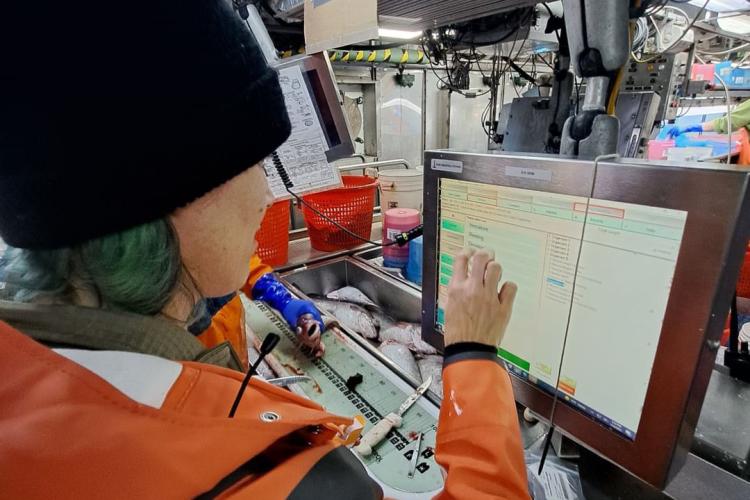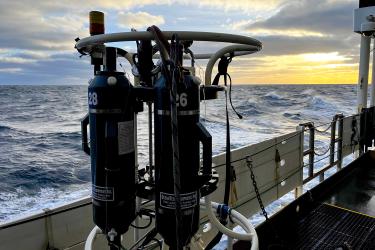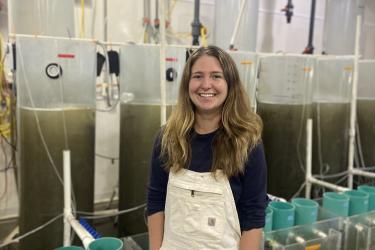There’s an expression among parasitologists: “Never invite a parasitologist to a dinner party.” Once your mind has been opened to the complexities of parasites, you really can’t stop thinking about them and will talk about them to anyone who will listen. On leg three of the Fall 2023 Bottom Trawl Survey aboard the NOAA Ship Henry B. Bigelow, my shift definitely got an earful of parasite “fun facts.”
I work in the Ecosystem Surveys Branch and my background is in parasitology. That meant that I kept my eyes peeled for parasites. This was my first time sailing on this survey. While I was excited to learn about many new fish species, I was perhaps more keen to see what parasites they had.
Because this survey allows us to examine fish in a hands-on way, we can learn information about their parasites, diet, age, and life history that would be impossible to know otherwise. It is equally valuable to track these traits over time (as this survey has done for the past 60 years!), so we can see how fish diets and ecological interactions may be changing.
What Parasites Tell Us About Fish
Parasites are fascinating because many of them are transmitted through food webs—when predators eat their prey. In a parasite’s complex life cycle, it cannot continue its development unless its intermediate host is eaten by a specific final host. To learn about a fish’s diet, the standard first step is to examine the fish’s stomach contents. This can provide some information, but many fish feed infrequently, and stomach contents can be lost when the fish is brought up from deep in the ocean. Parasites, however, accumulate over a much longer time span. Some parasites are associated with specific host species, so they can provide a more representative picture of diet. Scientists can use parasite presence as a kind of “biological tag”: Because fish in different populations can have different parasites, and they have been used to identify fish stocks.
While processing the catch at sea, I was not disappointed. The most obviously parasite-laden fish was the monkfish. Even without examining the intestine or using a microscope, the abdominal cavity of this species was loaded with roundworms. When you see roundworms outside of the stomach or intestine, this typically means the worm is in a larval stage. These larvae enclose themselves in a protective capsule, waiting to be eaten by the required final host. The final hosts for marine roundworms are often large fish, sharks, seals, birds, or cetaceans. In some cases, hosts can be a dead-end and the larva will simply wait in its capsule until it’s killed by the host’s immune system or when the host dies. If the worm infects a large monkfish—a fish with very few predators—these roundworms could be waiting a very long time.
Oh, Barnacles!
We also recorded whether there were barnacles on American lobsters. The barnacles found growing on the outside of lobsters are considered commensal, meaning that they benefit from the lobster without harming or taking energy from it. These barnacles are not technically parasites, but may interact with shell disease and cause harm if they start to cover the lobster. Because of this we also collected data on whether shell lesions were present on the lobsters.
Dreaming of Parasites Until the Next Survey
This was only a glimpse of the parasite diversity I got to see in the Northwest Atlantic Ocean. It’s enough to keep me thinking about parasites in this amazing ecosystem until I’m able to sail on the survey again.






